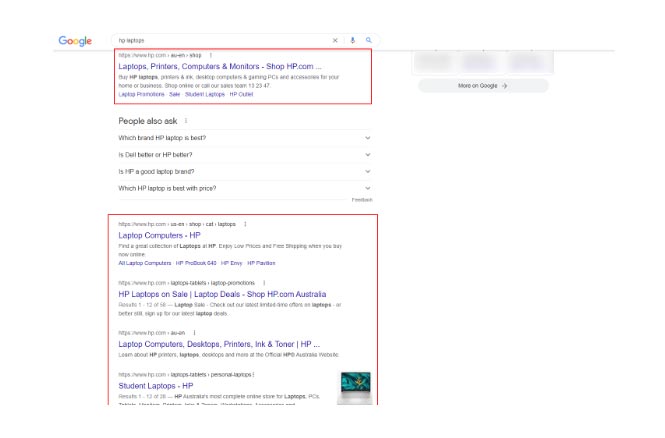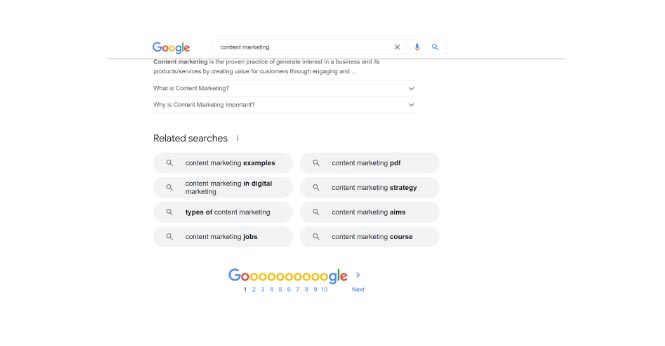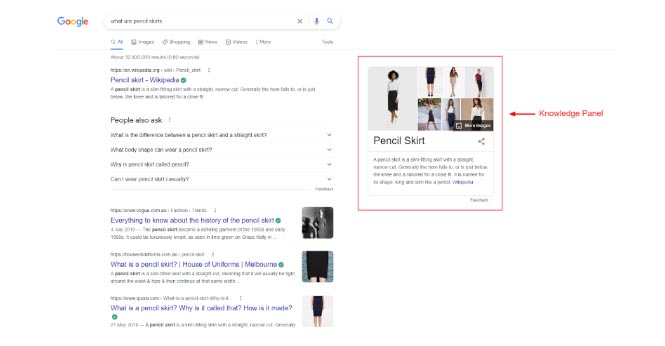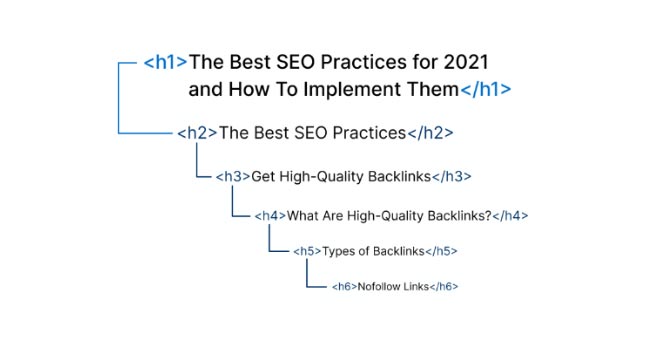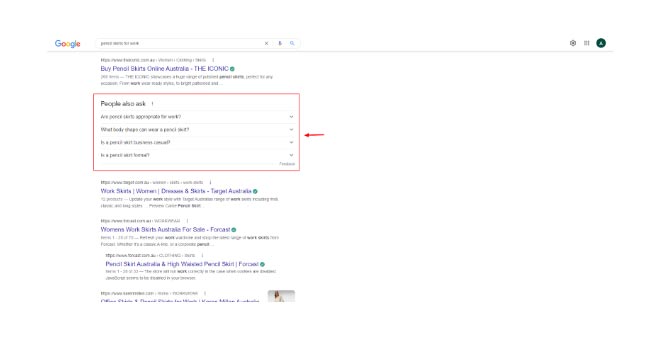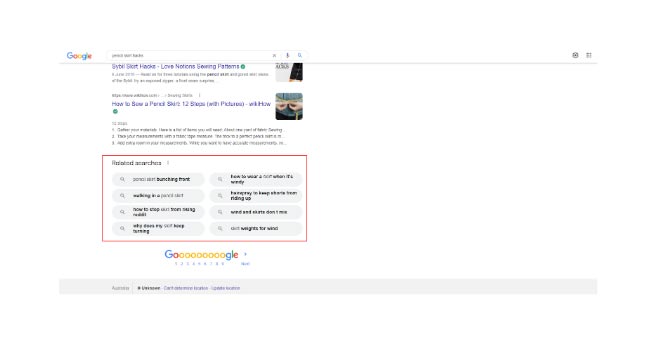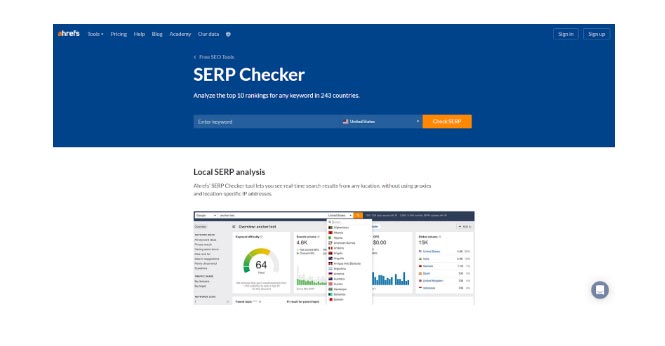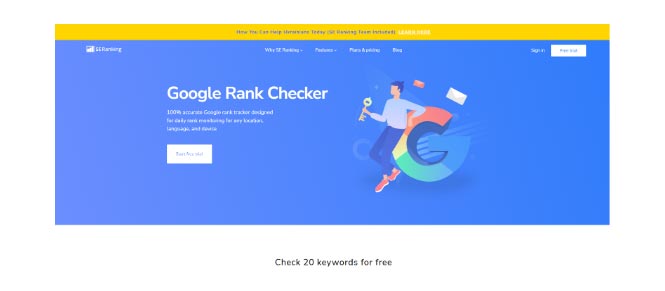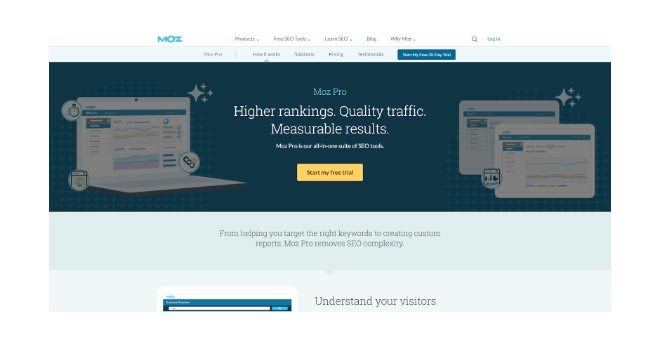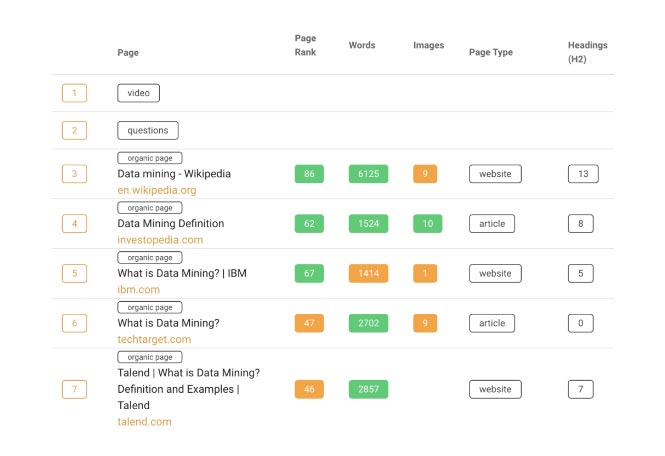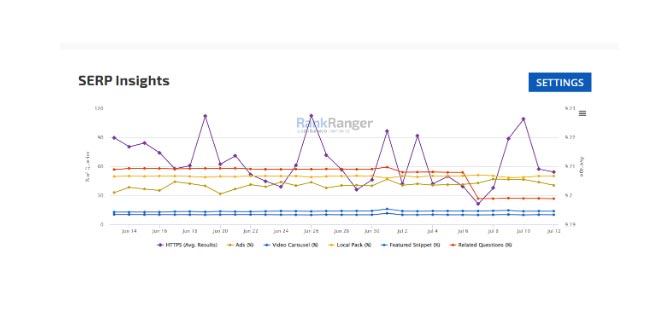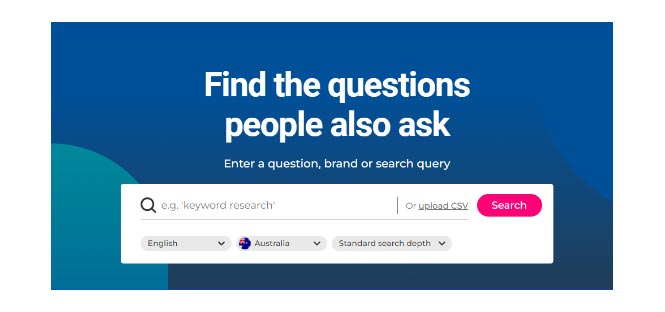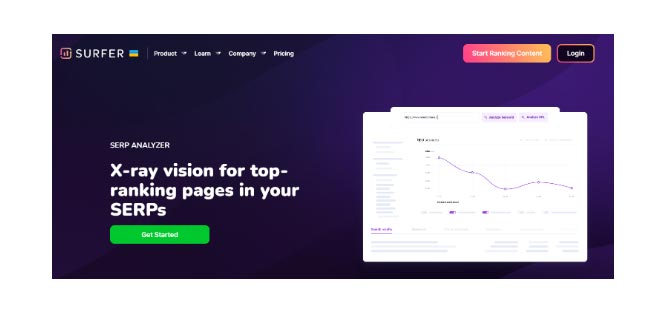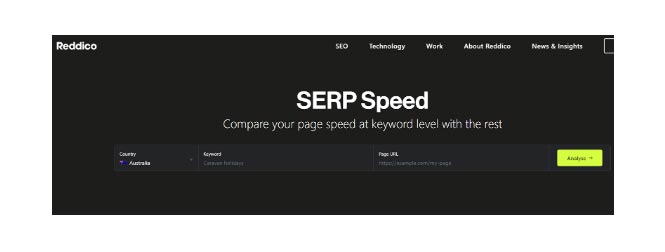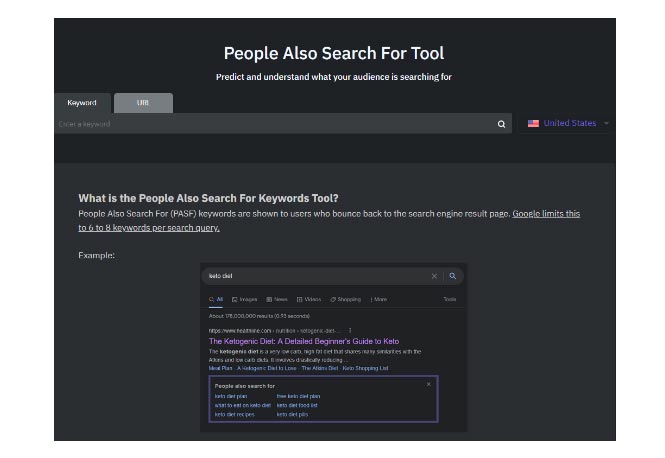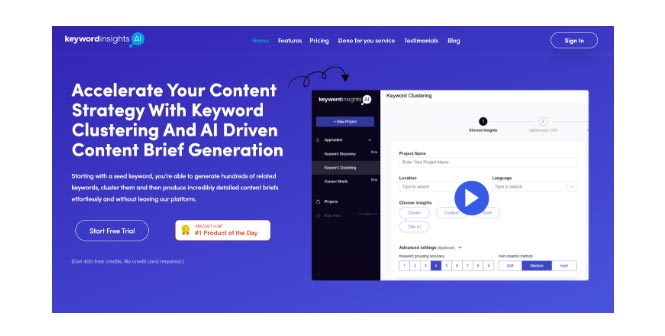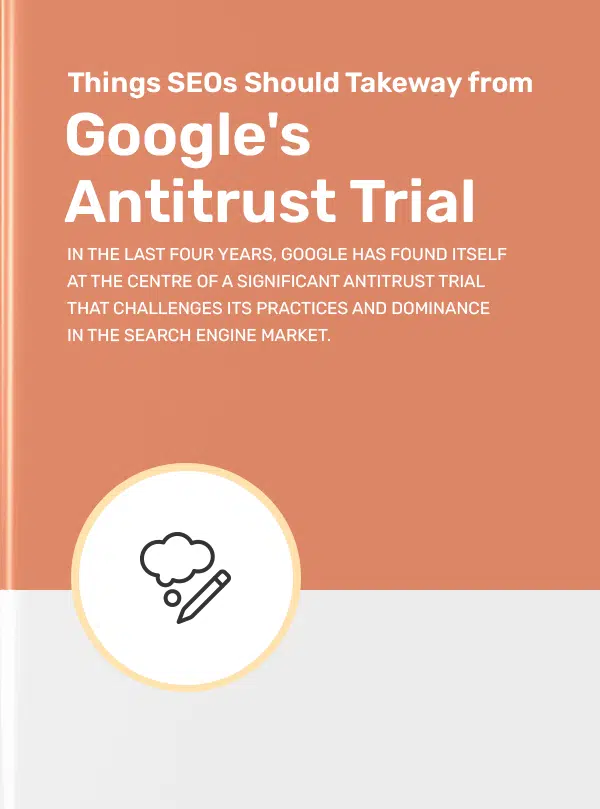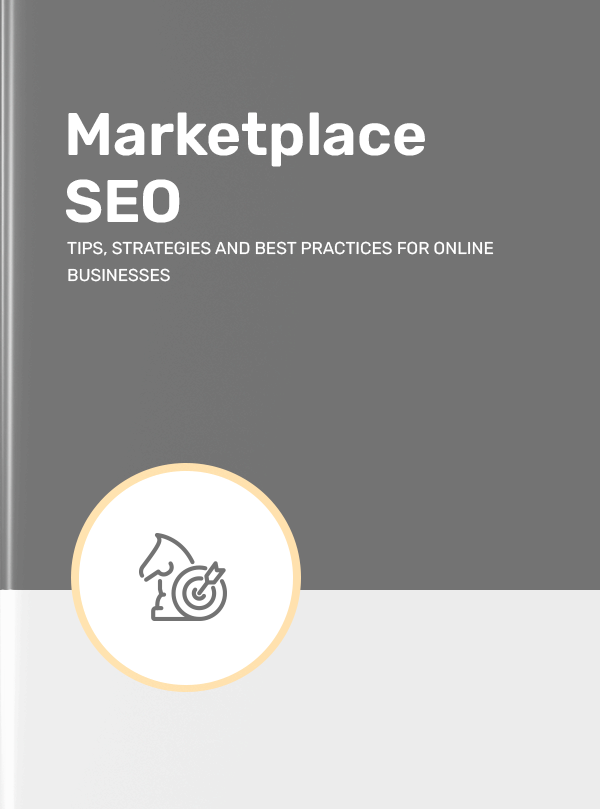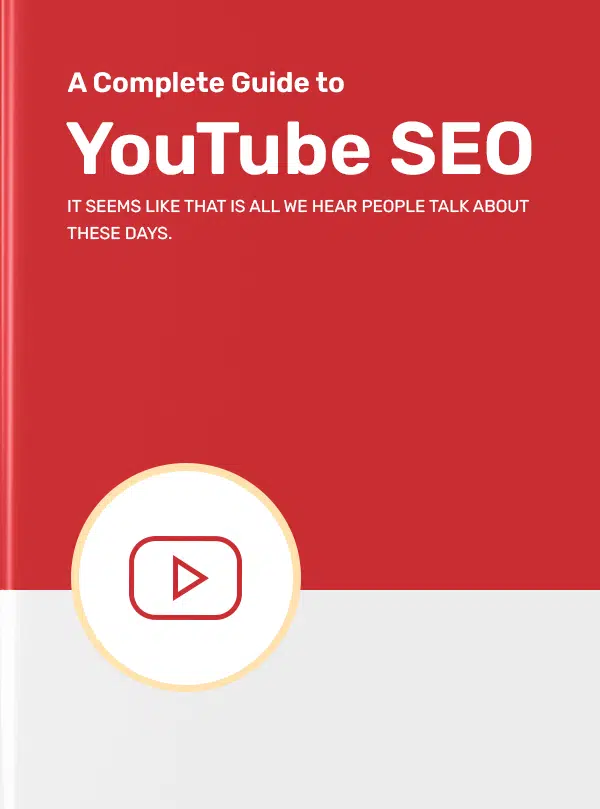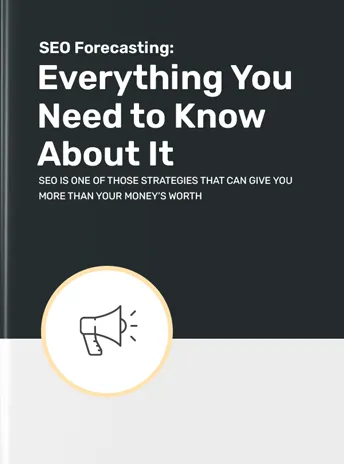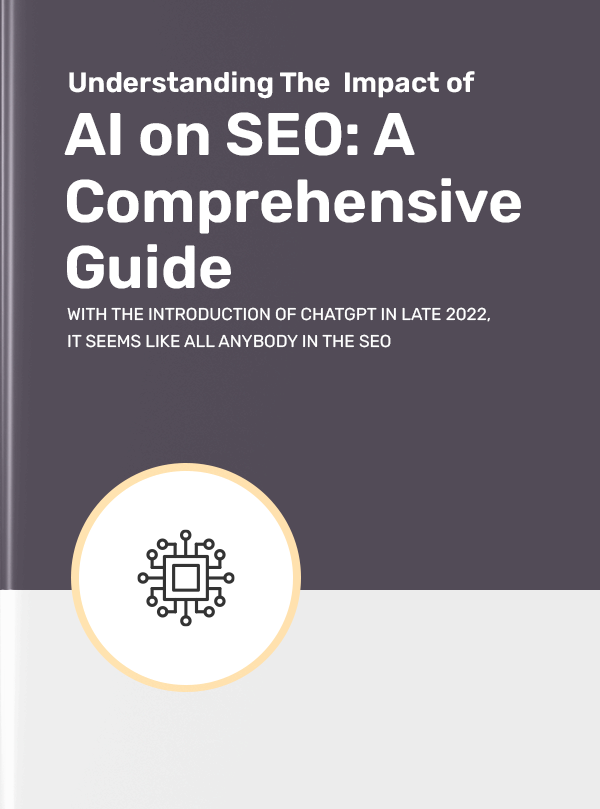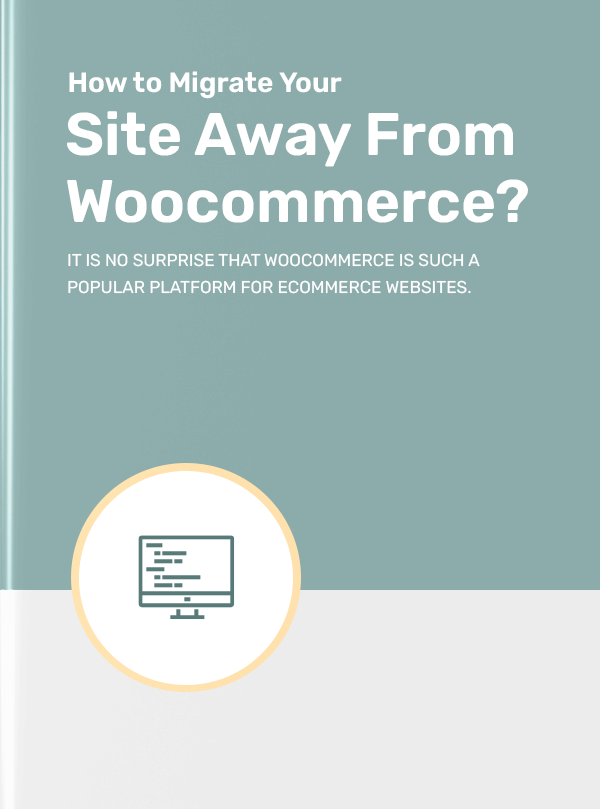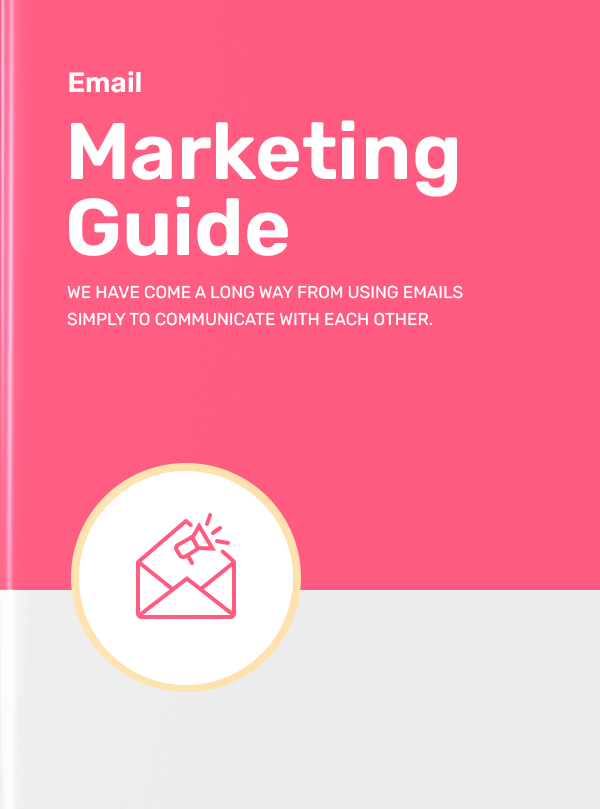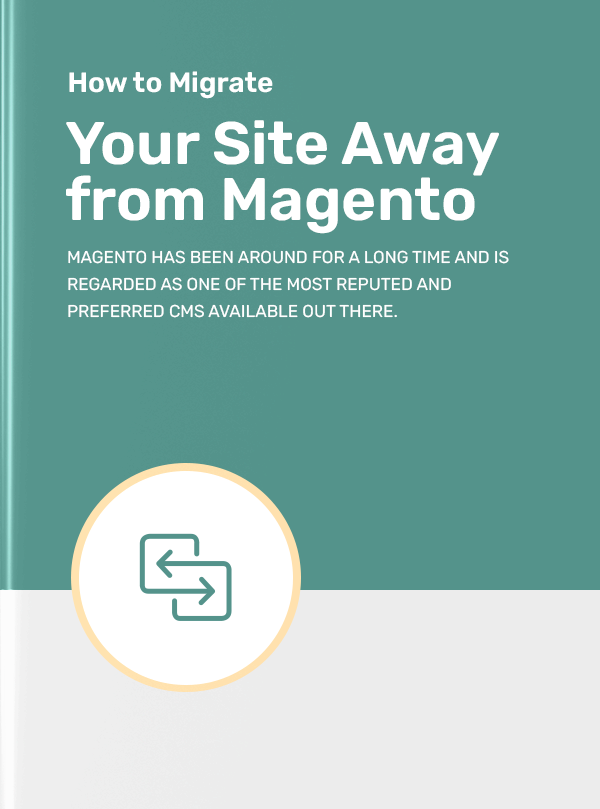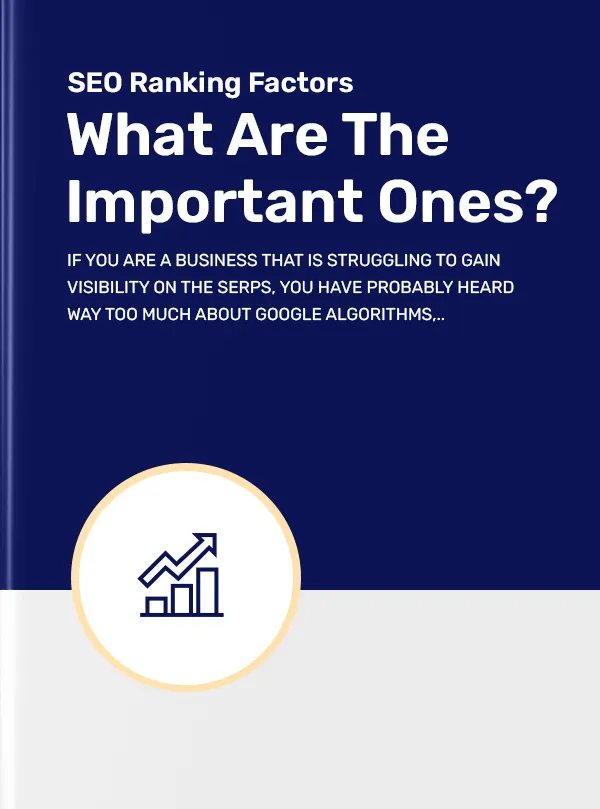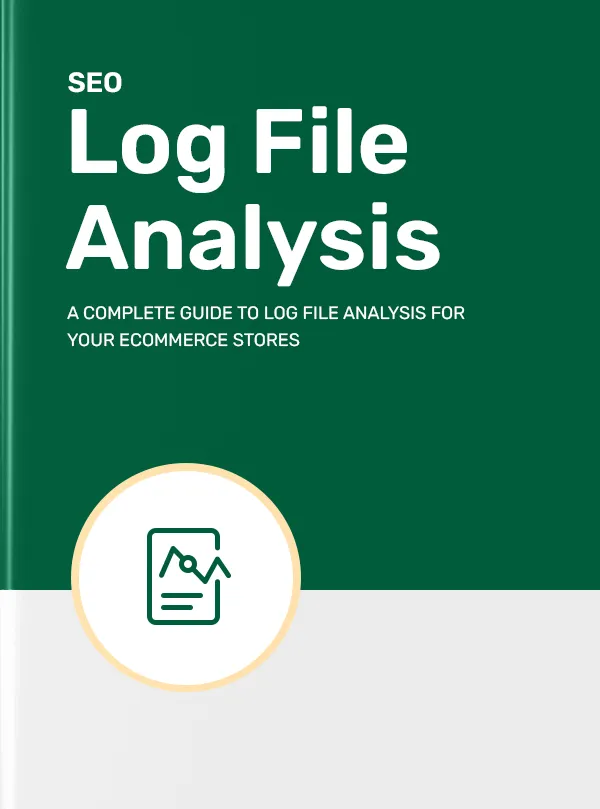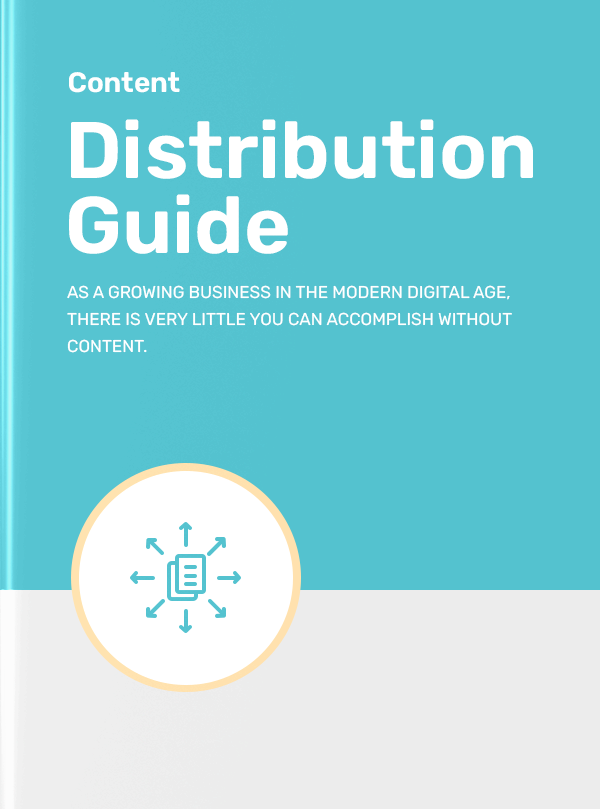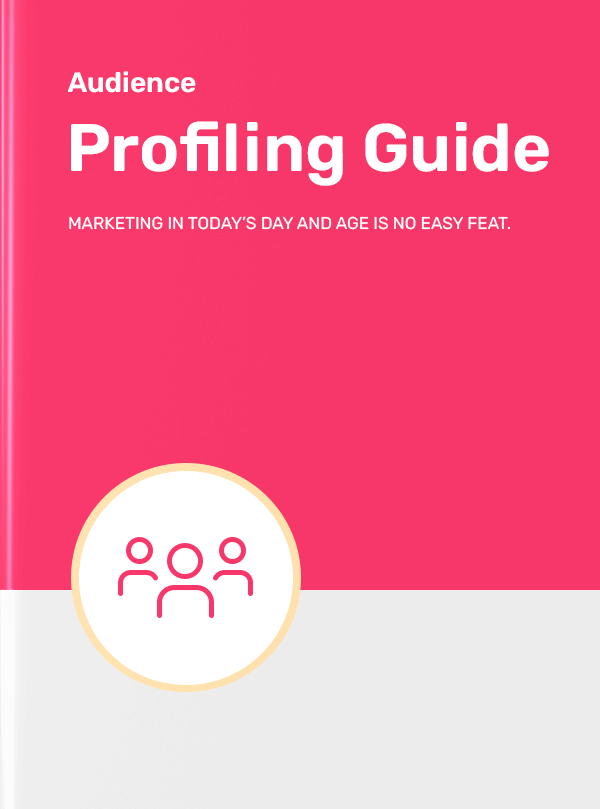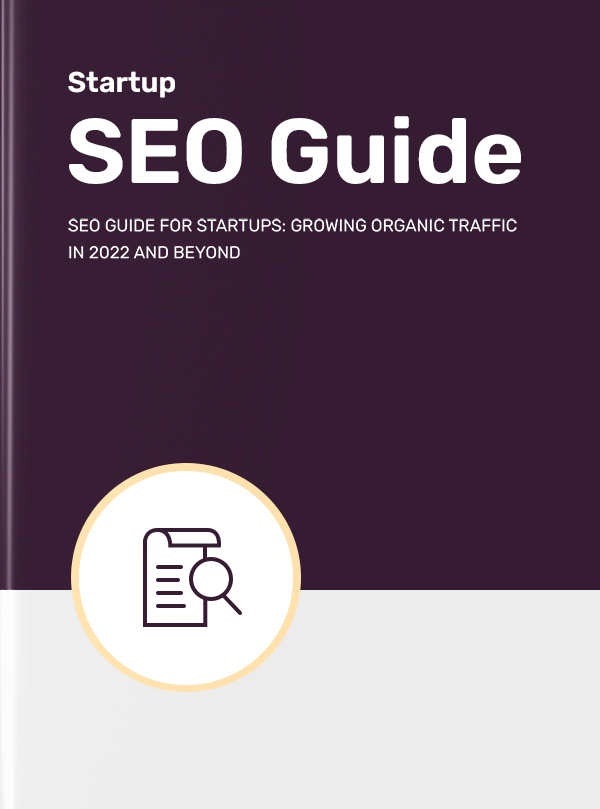Get a Free Seo Audit in Minutes
Get a Free SERP Analysis for Content Strategy Guide SEO Audit in Minutes
Ranking high on the SERPs requires diligent SEO efforts and focused efforts in developing content that can put your website on the map. Combine this with enough research, and you may just hit the bull’s eye.
Yes, you will definitely benefit from hiring a reputed SEO agency that can take care of this for you. But if you want to get started on your own and gain the knowledge required to scan the SERPs, and understand the aspects that may impact your performance on it, we get it.
But businesses are often left dejected and wondering — it is not possible to secure those coveted SERP positions. Again, we get it.
You can either look at it that way or bolster your SEO and content strategy to get to those top positions. But let us warn you — it is not going to be a simple task.
After all, SERP analysis is that vital step that will define the way your content strategy will work. With that in mind, let us understand what SERP analysis actually is and how to go about it.
When you are just starting to venture into the online and digital space, it bodes well to take a hard look at what your competitors are getting right — and wrong.
The best place to start doing this is, without a doubt — the SERPs.
It is common knowledge that the first page of SERP is the most valuable real estate, digitally speaking. While, over two-thirds of clicks go to the first five top SERP results, and more than 90% of content on the internet never gets any traffic from Google.
An analysis of SERP is basically the process of evaluating the top ranking websites to identify the actions that they are taking that lead to such high positions. Doing so will also let you know the keyword opportunities that you should evaluate to rank on the SERPs while outranking your competitors.
So, answering the question that just popped up in your mind — yes, SERP analysis can be perceived as a part of your competitor analysis.
That said, there are many significant improvements that you can make to your SEO and content strategy by conducting a diligent SERP analysis.
What are the Advantages of Conducting a SERP Analysis?
As is the case with any major strategy that you undertake for your business, we will explore the benefits of conducting a SERP analysis. While you can get a plethora of benefits by conducting SERP analysis, it can predominantly help you in:
Stronger Keyword Research
The most important benefit of conducting a SERP analysis is definitely the role it plays in strengthening your keyword research. When you are carrying out keyword research, you will probably come across hundreds of keywords, if not more, which may seem relevant to your content.
But are all of them useful and qualified to be a part of your content?
Well, that is a question that SERP analysis can answer for you. Maybe a keyword seems relevant but is semantically incorrect hence not adding any value to your content. Plus, there are always new keyword gaps waiting to be found.
Consider that 15% of search terms are new to Google and have not even been discovered yet. So, you do have the opportunity to rank for keywords that your competitors have not yet started leveraging.
SERP analysis will tell you a lot about such keywords and offer insights on how you can best leverage them for your content strategy.
Identifying the User’s Intent
When you enter a search term on Google, you will receive an array of results that will attempt to offer information related to the search query. But it is only when you look closely that you will be able to identify patterns in these results.
To get your business website to rank on the SERP, you must clearly understand your target users' search intent. The best way to identify this search intent is actually quite simple. We turn to our good ol’ reliable friend — Google.
We will show you how.
Say, you have an online store that sells children’s toys. You are wondering how your content strategy can help you rank on the first page of SERPs. You have done some basic keyword research, but are unsure about the kind of content that will work for you.
Let us see how a quick search for “board games for kids” might shine some light on that.
You will immediately see that for this keyword, most results are either category pages of other similar websites selling board games, or blogs that list board games for kids. This tells you that your target audience searches for this term with informational or transactional intent. Now you know what kind of content might work better for you, right?
This is how SERP analysis can help you get insights into the user intent or the search intent behind the keywords that you want to use in your content.
Assessing the Difficulty of Your Content Ranking for the Keyword
When you are analysing the SERPs to understand the search intent and performance of a keyword, you are likely to get almost all insights on whether to proceed with a specific keyword.
The key term here is ‘almost’.
The complete likelihood of your page or website ranking for a certain keyword includes consideration of a few more factors. The key piece of information is the difficulty of a webpage to rank for that keyword.
While most SEO tools that you may be familiar with, such as Ahrefs and SEMrush, provide insights on keyword difficulty, to get a more accurate picture, you can always rely on a SERP analysis.
Conduct Google searches using the keywords that you are considering and check the results that are popping up on the SERPs. For instance, if you are a wholesaler of laptops, targeting a keyword such as “hp laptops” will probably be a waste of time. Here’s why:
As you can see, the official HP website pretty much occupies all the top positions for this keyword. This is because Google understands that this website has the best likelihood of satisfying all kinds of search intent that the user may have related to HP laptops.
Thus, assessing keyword difficulty will give you a better idea of the key content pieces that you would be competing with when you are trying to produce content that ranks.
Identifying Your Actual Competitors
Every business follows its own logic while defining its competitors.
Some go by similarities in their target audiences. Some analyse the ones that operate in the same verticals. And then there are some businesses that go take the smart way and focus on businesses that are competing with them digitally.
By analysing the SERPs and figuring out the businesses that are ranking for the keywords that you are considering, you can figure out the businesses that you would be competing against. Once you identify these competitors, you can audit their content strategy and get a better understanding of the tweaks that are required in yours.
Additionally, you will also be able to assess the performance of all your content pieces by analysing the content that it is likely to compete with. After all, in terms of your content strategy, these will be your actual competitors.
Segmenting and Planning your Content Strategy
By now, you already might have a good idea of how much a SERP analysis can contribute to your content strategy. But perhaps the most important benefit that you should consider in all of this is the extent to which it can help you organise your content strategy.
A very good example of this is if you want to implement a topic-cluster model for your website content. Since every business out there today wants to organise content so that their targeted readers can find exactly what they are looking for, taking a structured approach is a good idea.
SERP analysis can aid you in strengthening your efforts towards this, by pinpointing the major topics that you should be focusing on as opposed to just the long-tail keywords.
For instance, if you have a pillar page on “content marketing”, it is much easier to find related topics to create cluster pages, simply by conducting a quick SERP analysis. Take a look at this image:
Identifying the Content Gap
If you thought creating a content strategy is all about conducting a quick SEO analysis and producing content - think again.
No business ever made a mark on the SERPs by writing on the subjects that have been covered over and over again. You need to analyse the topics that have been covered before, evaluate the gap that your competitors have not yet covered, and look for opportunities to fill this content gap.
Identifying content gaps this way through SERP analysis can be a great way to empower your content strategy to produce the desired results for you.
We have now discussed extensively the various benefits that you stand to gain from carrying out a SERP analysis.
Now comes the interesting part. The actionable stuff that you were waiting for.
So, if you find yourself wondering at this point — what are the steps to conduct a SERP analysis? Read on to know the step-by-step process to go about it.
Step 1: Conduct Keyword Research
We kick off the SERP analysis with keyword research.
Before you get busy relying on any keyword to empower your content strategy, you need to understand the kind of content that ranks for the keyword, and how the keyword is performing. In fact, you should be looking at not just the keywords exactly relevant to your business, but also the ones that are otherwise related to the industry.
Identifying the keywords that will work best for your business will help you achieve better success in your SERP performance.
Step 2: Identify the Search Intent
If you have dabbled in SEO for long you might already know that relying on keyword research without a clear picture of your users’ search intent is not very useful. Having a better understanding of your keywords as well as the search intent behind them will be useful in targeting the right audience for your content.
Doing so will help you align your content with Google’s endeavour to match the right results with search queries. Anytime you target the wrong intent, there is a good chance that the reader who lands on your content may not find what they are looking for and bounce right off your website. This hurts your organic SEO performance.
On the other hand, identifying the right search intent helps search engines satisfy users and get the right customers.
Step 3: Carry Out a Competitive Analysis
Once you have got the keyword research strategy and identification of search intent out of the way, it is time to conduct a robust competitor analysis.
We have already talked about how evaluating what your competitors might be getting right or wrong might help you create a solid strategy for your own business. On the same note, it is also a good idea to understand what the SERP looks like before you create ambitions of ranking for a keyword.
Doing this is important primarily because it will give you a better understanding of what your target users are looking for. Meaning, that with this step you are leveraging the search intent identified by you in the previous step to the next level.
Once you study the content that is ranking on the SERPs for the targeted keyword, you can evaluate the changes that you should make in your content and strategy to secure those touted positions.
Step 4: Find Ranking Opportunities
You have carried out thorough keyword research, identified the search intent, and conducted a competitive analysis — now for the next step. We take all of this information into account and understand the kind of ranking opportunities you may be looking at.
Know that having great content is only the beginning. That alone can not help you find the right ranking opportunities. These are opportunities that may be right in front of you but may have gone unleveraged.
Some of these instances are:
- Your content may already be ranking for certain keywords but not in the first position or as a featured snippet.
- Your competitors may have similar content, so you can reconsider your approach to content creation.
- You may find keywords that you have missed or left unused before, that can perform really well and help your content rank better on the SERP
Step 5: Optimise Your Content
Once you carry out all the previous steps, you will already be well on your way to conducting a proper SERP analysis. The next step in this process is aimed at implementing the steps that we have discussed thus far.
After identifying ranking opportunities, you should actively focus on optimising your content effectively. Based on the analysis so far, you may either be looking at content creation from scratch or updating the existing content. Either way, you will be looking at a content optimisation process.
This is necessary to ensure that your content is primed to perform well on the SERPs.
So, now you understand the importance and know the process of going about SERP analysis.
Time to look at the elements that you should be specifically focusing on while conducting a SERP analysis.
Triggered SERP Feature
SERP features are easily some of the most prominent parts of a typical search results page. Regardless of what you search for, you are likely to trigger at least one of the SERP features. SERP features act as the perfect tools using which Google attempts to provide answers to search queries more directly.
Look at enough SERP features and you will realise that they all serve a similar purpose — they all aim to eliminate the number of clicks and scrolls that users have to deal with before getting to the answer that they are looking for.
But while the purpose of these SERP features is pretty apparent, it is important to ask how they are triggered. By appearing in a SERP feature, you can elevate your visibility and position in the SERPs, and redirect more traffic to your website.
It bodes well for you to apply the SERP analysis process to the SERP features so you can leverage them effectively. Conduct keyword research to understand the terms that are likely to work for your business on the SERPs. Now, carry out a quick Google search to understand what kind of results pop up on the SERPs for the specific keyword.
Say, you run an online clothing store that specialises in women’s outfits. You want to understand just how you might perform on the SERPs if you write a blog on pencil skirts. You may search for “what is a pencil skirt” to find out ranking opportunities. The results are likely to look something like this:
You will see that apart from the large chain brands that sell pencil skirts there is an additional SERP feature which takes up a prominent position on the SERPs. The Knowledge Panel is a SERP feature that is triggered when users search for an informational search query.
While there is not much scope for you to feature on the Knowledge Panel, you can identify some of the major keywords from this section to add to your blog. These keywords undoubtedly perform well for any queries related to the one that you searched for.
Using this information, you would now be able to create a blog that not just targets this keyword, but also has the likelihood of getting you featured on other SERP features such as People Also Ask or Featured Snippets. There you have it.
By applying this logic to other similar SERP features, you would be able to leverage a lot of opportunities for strengthening your content strategy. What’s more, you will be able to create and update content that is more likely to appear in SERP features, thus granting you more visibility on the SERPs.
Meta Tags: Meta Title, Meta Description, Meta Property Tags
Next, we discuss an aspect that you should definitely consider while conducting a SERP analysis — the meta tags.
Let us preface this with a question — what is the first thing you notice about a top-ranking website on the SERP?
The title right? Or maybe the brief description below that title? Well, that is exactly why Meta tags are so important to analyse when you are studying the SERPs. Adding a good meta title and meta description will attract users to click on your website. Plus, they let the search engines know what your website is all about. Win-win.
While conducting a SERP analysis, when you look for a keyword, you can also analyse the meta tags for top-ranking websites. This will help you have a better idea of what would work for your website and content strategy. Let us understand this with the same example as above. Say, you just finished your blog on “Best pencil skirt hacks”.
When you have so many links to choose from, you are most likely to click on a website that best describes your content. As you can see, some of the pages do not even address pencil skirts in their meta properties. These are the positions that you can target with your content, provided you take the time to define appropriate meta tags.
Since meta tags inform search engines on the right websites to show for specific search queries, it helps to invest time in optimising them. Once you include meta tags as an active part of your content strategy, you will be able to see your SERP performance improve immediately.
URL: Keywords in URL
When you look at the SERP results, the next prominent aspect that stands out is the URLs. URLs can make or break your user experience — you may have heard this one before. But did you know that URLs can heavily influence the likelihood of a user clicking on your link?
It’s true!
Apart from assigning more authority to your domain, embedding keywords can also help you rank better on the SERPs. It is always a good idea to take a hard look at your URL structure, and ensure that you have integrated the right keywords in it and that it is short, concise and descriptive.
By identifying the keywords that are included in the URLs of the top-ranking websites, you can leverage the opportunity to utilise those keywords in your content. Remember, while using a couple of keywords or a long-tail keyword in the URL is a good practice, loading it with too many is considered spam.
H1 Tag: Keywords, Relevancy
If you have ever written a document, you must be aware of the thought that goes behind finding the right heading for it. In a webpage, this important heading is set as the H1 tag.
H1 tags in your content let the search engine bots, as well as readers, know what your content is all about. So, to be completely effective, it should summarise all topics covered in your content. One of the important things that you should keep in mind while setting the H1 tag is the hierarchy of your page, H1 will be the parent topic for several sub-headings to follow.
Be careful to not cause a duplication of your H1 tag as it can adversely affect the SEO performance of your page. Remember, H1 tags directly impact your search engine visibility and rankings.
It bodes well for your page to include high-performing keywords in your H1. Your page is more likely to be indexed and ranked appropriately as a result of this. Not to forget, it is also the most visible section for a user who has just landed on your page. It should be effective in prompting the user to read further.
Essentially, this means that having a balance of keywords and relevancy will make all the difference.
While carrying out a SERP analysis, ensure to click on the top-ranking websites and audit the H1 tags that have been added to the content. Doing so will help you understand the best practices that work for your SERP competitors that you should follow in your content strategy as well.
Subheadlines (H2-H6 Tags): Understanding the topics, sections, keywords
When you are conducting a SERP analysis, a surface-level quick sweep of the SERPs will only give you so many insights. When you want to dive deeper and get detailed insights, you will need to audit each page that enjoys a coveted higher rank on the SERPs.
If the website that you are clicking on leads you to a blog or a detailed webpage, there is a good chance that the content has been divided into neat sections separated by distinct subheadings.
This is where your H2-H6 tags come into the picture. These tags can not only clearly indicate the topics and sections that you are covering in your content, but they can also offer you a lot of SEO benefits when you include keywords in them.
With the help of these tags in your content, the hierarchy of your page will look something like this:
Imagine not having your content neatly organised like this, and having all the headings cluttered and disorganised. Now imagine having an entire repository of content pieces with such organised structures. Unimaginable, right?
When you are creating a content strategy, defining clear guidelines about the way your content will be structured is quite important. Your SERP analysis will pinpoint some of the best practices and popular ways you can use to structure your content.
Links: External and Internal Links and their Anchor Texts
It is hard to imagine the web without links. After all, links are the elements that connect content across the Internet. In fact, if you want to get your website to reflect any kind of good SEO performance, befriend links — both internal and external.
We can go on talking about keywords and their importance, but the truth is that even keywords will only work so much without a proper linking strategy in place. Internal as well as external links have important roles to play in defining your SEO and content performance.
Adding authoritative external links to your content helps you assign more credibility and authenticity to your content. Doing so tells search engines that you have done your research and none of the information that you have provided is unfounded. This helps search engines know that your page could be useful for relevant search queries.
On the other hand, internal linking will help you establish important links between the content on your website. Say, one of the blogs that you have recently written ranks high on the SERPs, having enough internal links in it will help search engines crawl and index the other relevant pages that users might find useful.
Internal links also define how your readers should navigate your website.
The anchor text — which is the exact text on which you add hyperlinks to other pages should also be relevant and ideally contain a keyword. Doing so can be beneficial from the SEO perspective.
If it is not already clear, links are quite important for search engines to crawl and index websites effectively. While conducting a SERP analysis, you will be able to analyse the kind of linking structures followed by the top-ranking websites, that you can benefit from imbibing.
Using these inputs, you will be able to define the internal and external links required in your content strategy quantitatively and qualitatively.
Tables: Captions and Headers
Now that we have discussed some of the most prominent elements that you should be looking at during your SERP analysis, let us now dive deeper into the other aspects that may play a role.
You may often come across content that makes you feel — Man, I could have presented this more effectively using a table.
If you find yourself in this position, always go with that instinct and substitute that huge chunk of text with a table. They are easy to read and help users retain information quite easily. What’s more, they can enhance the overall readability of your content piece.
But apart from the table itself, pay attention to the captions and headers used for your tables. They not only add more detail to your table but they also make your tables more accessible to a wider audience.
Taking simple steps such as defining a prominent header row, and designating the headings with tags can be fruitful in this endeavour. Moreover, tables should have a descriptive yet concise caption which also includes one or two crucial keywords.
Enhanced readability engages visitors who land on your website who are then likely to positively impact your SEO performance. This is an important consideration that you should include while creating your content strategy.
Questions: People Also Ask, Questions on Competing Pages
What are search queries if not questions that your prospective customers may have?
If you look closely, regardless of the search intent, every business and website attempts to answer the questions that their target customers might be seeking answers for.
The questions could be as simple as:
- What is photosynthesis?
- What is lead management software?
- How to create a customer survey?
Or they can be ones having slightly complex search intent, such as:
- Where can I find an electric toothbrush online?
- Which is the best sales management tool?
- How much time does it take to lose 15 kgs?
These questions will undoubtedly be disguised as keywords — so don’t be fooled!
But if you find yourself wondering what specific questions your customers might be having, then there are several easy ways to find answers to that. When you are carrying out a SERP analysis, pay special attention to the People Also Ask (PAA) section.
Let us understand this with the same example that we discussed earlier. If you are writing a blog on pencil skirts and want to understand how the keyword “pencil skirts for work” will perform for your website, here’s how the SERPs will look.
Now, you may not be able to take the positions that some of these highly popular and authoritative online stores are enjoying, but get enhanced visibility on the SERPs by appearing on the People Also Ask section.
The easiest way to do so is by targeting these questions in your content pieces. Of course, you can go a step further and study the competing pages for the search query. You will be able to identify questions that these pages have targeted or the customers are asking on these pages.
Related Searches: ‘People Also Search For’ Section
If you are new to SEO processes such as keyword research, you will come across numerous SEO services online who will suggest you start from a simple Google search. And with good reason.
You see, if you know where to look, the SERPs are no less of a treasure trove of keywords. During your SERP analysis, spend some time looking at the ‘Related Searches’ section, which is also known as the People Also Search For section.
You will find it at the bottom of your SERP results offering a wide range of search queries that are related to the ones that you have searched for. This section helps users refine or expand their search if required, and helps websites identify prospective keywords that they can utilise.
Take a look at the useful related searches that Google came up with when we searched for “pencil skirt hacks”.
Taking a second look at this simple and highly accessible element can offer you a lot of insights about the keywords to include in your content strategy.
Content Metrics: Length, Depth, and Relevancy of Content
This should be a no-brainer, considering we are discussing the role of SERP analysis in content strategy.
SERPs do not just indicate the SEO health of a webpage, but also the value and quality of the content within. The best way to understand what these pages are getting right is to take a look for yourself.
While there are several content marketing metrics that you can consider if you are going for a detailed audit of the competing websites, the basic ones could be a good starting point. For instance, factors such as the content length, depth and relevance of content could be the perfect parameters for assessing the content quality.
In this process, ensure to ask questions such as:
- Is the content long-form or short-form?
- What is the publisher doing differently?
- What kind of resources has the website used to create the content?
- How well does the content answer the search query that it is ranking for?
Seeking answers to these questions will help you find the content gaps, which will then allow you to create content that will perform well for your business.
Highest Frequency Keywords: In all content and in all sections separately
The next thing you need to be on the lookout for while carrying out a SERP analysis is keywords that are driving a lot of traffic to that particular page.
To ensure this, you should be specifically targeting the keywords that are appearing most frequently on these web pages and landing pages. These keywords with the highest frequency are most likely the ones bringing the most traffic to the page and helping it rank higher on the SERP.
In most cases, keywords with the highest frequency are those that have a lot of monthly traffic and face lesser competition on the SERPs. These are ideal keywords to consider for your content strategy as well. This measure is not just for a specific page.
You can also audit the complete website containing the competing webpage to understand the keywords that are used most often. You can also go a step further and use SEO tools to check how much traffic such keywords are bringing to the website.
Doing such tweaks to your strategy will inevitably help you rank better and higher on the SERPs.
Related Keywords Usage
We have talked a lot about keywords already — we are fully aware.
But let’s face it: as one of the primary ranking factors, keywords can make or break your website performance.
If you want to ensure that you have covered all the bases in terms of your SEO performance and ranking on SERPs, keywords are one of the primary aspects that you should be paying attention to.
To raise your odds of ranking higher on the SERPs, it is important to consider all the keywords that are related to the primary ones that you are considering.
When you identify keywords that are appearing quite frequently on the websites that you are auditing, it is also a good idea to consider the keywords related to them. We already discussed scanning the ‘Related Searches’ section.
But apart from that, you can also consider using a SERP tracker tool to understand which related keywords could actually perform well for you and other competing websites. With this information, check if these keywords have been used in the meta tags, headings and URLs of the competing websites.
If the answer is no, you have the perfect opportunity to leverage these keywords and add them to these vital elements which can then help you climb the rankings and surpass the competition.
Including them in your content, will undoubtedly add more value to your content strategy.
Equipped with all of this information, let us now look at some of the primary, highly recommended tools that you can use for conducting SERP analysis. Each of these tools has a reputation for being reliable and rich in features, which can inevitably lead to effective SERP analysis.
Ahrefs Local SERP Analysis Tool
Ahrefs — the ever-popular SEO tool whose keyword checker tool and content marketing-related tools are some of the best in business today also offers a SERP checker. The SERP checker by Ahrefs allows you to check the top 10 ranking content pieces on the SERPs in any country (well, 243 countries at least).
You can check for metrics such as domain ranking, the location-specific performance of individual URLs and all the individual pages within a SERP result.
SE Ranking
Remember all the steps included in a SERP analysis as discussed earlier? Well, SE Ranking offers a tool that will help you navigate all these steps in a super easy manner. You can check how a specific keyword is performing in five search engines, track SERP features, and conduct a competitive analysis quite seamlessly using this tool.
Not to forget, you can do all of this on a simple and user-friendly interface which is only likely to speed up your analysis.
Moz Pro SERP Analysis Tool
If you want to take your SERP visibility and keyword research to the next level, another tool that you can consider is the Moz Pro SERP Analysis Tool. You can understand how your SEO efforts are performing, and how volatile the keyword positions that you are targeting are.
With this tool, you can analyse the top-ranking SERP links more comprehensively and figure out how the specific keyword has performed over time.
SEMRush Position Tracking Tool
If you are looking for a robust tool that will help you track and monitor the ranking and SERP position of your website as well as your competitors regularly, then this is the tool to trust. SEMRush is a highly popular tool that offers several modules for a wide range of SEO and content marketing functions.
This position tracking tool by SEMRush also allows you to evaluate all the domains, subdomains, and directories as well as organise keywords into groups and tag them.
The aforementioned tools offer a comprehensive set of modules tailored to carry out all tasks that fall under SERP analysis. But you might not always need such a comprehensive analysis. Sometimes, you may just need a tool that is handy for you to carry out the micro tasks.
For instance, if you are looking to check if the blog that you have written is of the perfect length to perform well on the SERPs, you may want to use a handy blog post length tool offered by Use Topic.
thruuu
thruuu is a dedicated SERP analysis tool that extracts data by analysing the search engine results. It provides two different types of data: On-SERP data and On-page page data of the top results.
It presents the analysis in a consolidated format which includes the page type, content length, number of images & subheadings on page, etc.
With this analysis of the top ranking results, you can understand the audience's search intent better, create your content briefs faster, and create well-researched SEO content.
Rank Ranger Google SERP Features
Rank Ranger is an all-in-one professional SEO software that includes the Google SERP Features Tracking Tool in its suite.
You can use this Search Intelligence tool to know the trends and gain insights into the Google features that enhance users’ search experience.
Rank Ranger Google SERP Features Tracking Tool gives you detailed information on:
- Organic results features
- Knowledge graph features
- Direct answer types
- Page one extras
- Other organic statistics
Also, it gives you the above analysis for desktop as well as mobile search results.
AlsoAsked
AlsoAsked is an ideal tool to analyse People Also Ask (PAA) SERP feature. It provides deep insights into search intent with live, geo-specific PAA questions.
With this tool, you can retrieve the closest “related questions” that your audience may have for specific search terms. Thus, you can include the most relevant “related questions” in your content and optimise for PAA feature.
Surfer SEO SERP Analyzer
Surfer SEO offers a host of free and paid SEO & content creation tools. Surfer SERP Analyzer highlights common patterns from the top ranking pages for your target keywords.
You can use this tool to analyse top page in bulk and get data such as:
- Text length
- Page speed
- Referring domains & URLs
- NLP sentiment and entities coverage
- Meta tag structure, etc.
Reddico SERP Speed
Reddico SERP Speed is a free tool that helps you compare your page speed for a given keyword with the competing pages. While there are many tools out there that measure the overall site and page speed, SERP speed tracks page speed based on your target keywords.
It also gives you an in-depth analysis of how your site loads for users and crawlers. And other features include:
- Top 10 ranking performance analysis
- Top 100 organic rank check
- Actionable optimisation recommendations, etc.
SearchResponse People Also Search For Tool
SearchResponse allows you to analyse three SERP features: People Also Ask (PAA), Related Searches, and People Also Search For (PASF). While PAA and Related Searches appear quite frequently and for most search queries, PASF shows up for rare queries.
You can analyse your target keywords in this tool to check if they return the PASF section in search results. Accordingly, you can optimise your content with PASF queries and target this SERP feature.
Keyword Insights
Keyword Insights is an AI based tool that helps you conduct keyword research, group them in clusters, and create a robust content strategy.
Here are the key features:
- Keyword discovery: Helps you generate a comprehensive list of matching keywords for your seed keyword.
- Keyword clustering: Creates keyword clusters that can be targeted together on a single page and also provides recommendations for pillar-cluster topics.
- Keyword context: Helps you quickly identify the search intent behind the keywords at scale.
- Content brief generation: Helps you create well-researched and detailed content briefs and outlines for your topics which you can send to your writers.
Conclusion
And that’s all.
SERP analysis can quickly get daunting if you do not have the know-how or the right tools at your disposal. But as we just saw, when you are equipped with all of that, it is not that complicated.
SERP analysis should be an important part of your SEO and content strategy, which is why doing it the right way is super important. But if you are confused about where to start or how to get it right, you always have the option of leaving it to the experts.
Get in touch with us, and we will be happy to help.
